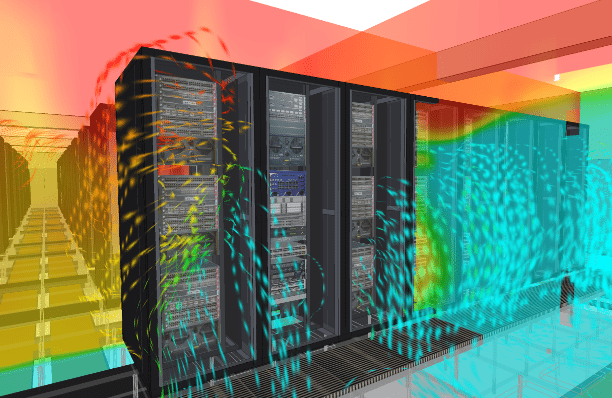Managing Airflow to Meet the Business Need8 min read

The data center industry can take pride in the huge innovations it has made in the energy performance of cutting-edge data centers. Only 10 years ago, many people would say that an average of 3kW per rack was the limit to air cooling, and a PUE of 2.5 was common even in state-of-the-art data centers.
Today, whether you argue that PUE is flawed or support it, the improvement in data center energy consumption is impressive. Even with spiraling power densities, data centers are now using less than 10% additional energy over and above IT energy – compared with 150% previously. Facilities where only modest improvements have been made are likely to bring this figure down below 50%. So, is that job done? In my opinion, it isn’t.
Focusing only on energy efficiency is a risky strategy: you need to manage the data center to ensure that you can keep installing IT to meet business needs while staying within the nominal space, power, network and cooling available. Similarly, you need to be sure that if your redundant systems fail, all of the IT equipment will be adequately cooled. You need to ask: is my installation resilient?
It is true that good practices, such as segregation via containment and blanking, tend to improve the performance of the data center cooling. But unfortunately they don’t guarantee it. Likewise, DCIM has plugged some of the gaps between IT and Facilities by providing tools to control process and share data. But these things don’t complete operational planning by filling the engineering gap. That is, they don’t help you to understand the engineering consequences of any actions you take, so that the actions with poor consequences can be avoided in favor of the ones with better outcomes. Using engineering simulation – for cooling, this is computational fluid dynamics (CFD) based tools such as 6SigmaDCX – in operational planning allows you to test any future plans before implementing them. These tests determine the impact on your infrastructure’s energy efficiency, IT thermal capacity and IT thermal resilience. They allow you to make important decisions about changes, such as:
- Is raising cooling temperatures to save energy justified, compared with the negative impact this may have on IT thermal resilience and the number of servers you can safely install?
- If you install IT equipment that does not fit within your conceptual design limits, will it meet your performance criteria?
These are two common questions – just the tip of the iceberg – that can be answered by applying engineering simulation to data center design, operational planning and capex-opex strategy decisions.
Your criteria will vary from one business to another. A web-hosting organization with multiple facilities may not be concerned with short delays if hardware fails, as the pages can be served seconds later from another facility or server. However, they will want to minimize the cost per page served by improving energy efficiency. On the other hand, an investment bank will be much more focused on whether their application is available. Availability and the ability to install IT as needed (capacity) will be much more important to them than energy efficiency. It is prudent and profitable to manage data center resources, particularly airflow, to meet the business need.
To learn more about how you can safely deliver improvements to the performance of your data center, and how you can ensure that your data center continues to meet your business needs even during failure scenarios, visit Future Facilities’ Media Center.

Airflow Management Awareness Month
Free Informative webinars every Tuesday in June.
0 Comments